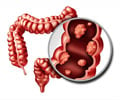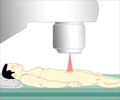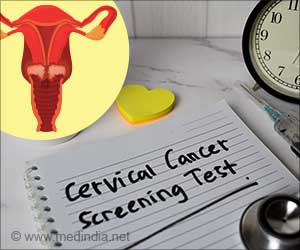Freezing prostate cancer cells using MRI guided hemi-gland cryoablation (HGCryo) is successful in controlling prostate cancer in clinically significant and advanced cases.

‘Freezing prostate cancer cells by using hemi-gland cryoablation (HGCryo) is effective in clinically significant and advanced prostate cancers. Follow-up biopsies showed no clinically significant prostate cancer in 82% of the patients.’
Read More..




The researchers used a less-invasive technique called hemi-gland cryoablation (HGCryo) for freezing the cells. Read More..
The importance of using modern magnetic resonance imaging (MRI)-guided prostate biopsy in monitoring the effectiveness of HGCryo is also emphasized in the study.
Hemi-Gland Cryoablation
In the hemi-gland cryoablation procedure, an advanced ultrasound/MRI fusion system is used to place needles precisely in and around the area of the prostate where the cancer is located.
Argon gas is then injected to create extremely cold temperatures. This destroys the prostate cancer and the surrounding area.
Advertisement
General anesthesia was given to the participants to perform cryotherapy, and the participants were discharged on the same day as the procedure.
Biopsies were performed after 6 months in all patients. An additional biopsy was performed in 27 patients after reaching 18 months' follow-up.
At both times, there was no evidence of clinically significant prostate cancer in 82% of the patient biopsies.
Repeated HGCryo or other treatments were effective in men who had prostate cancer detected at follow-up.
The study used three different biopsy approaches for monitoring the outcomes of HGCryo therapy:
- Tracking of prior cancer-positive sites
- Biopsy targeting of MRI-visible lesions
- Systematic biopsy of the entire prostate using a template
The researchers also use HGCryo technique in 6 prostate cancer patients with advanced prostate cancer. They found that HGCryo provided notable cancer control, and none of the patients died from their cancer nor developed metastatic prostate cancer.
There were no serious postoperative complications of HGCryo like urinary incontinence. Urinary incontinence is a general complication after prostate cancer surgery.
One patient had developed erectile dysfunction, which was successfully treated with medication.
Cryotherapy is becoming popular as it is a less-invasive alternative to surgery, and it is an FDA-approved treatment.
There has been limited evidence on the long-term effectiveness of cryotherapy in controlling prostate cancer. However, most studies of prostate cryoablation were performed before the availability of modern multiparametric MRI scanning of the prostate.
The MRI can provide a targeted path for precise biopsy and focal treatment in most men with prostate cancer.
The study also highlights the importance of follow-up biopsy. It plays an important role in evaluating the results of HGCryo.
Dr. Chuang and colleagues conclude, "As the utilization of MRI-guided biopsy increases, with resulting improved accuracy of prostate tissue characterization, numbers of candidates for PGA are expected to rise."
Source-Medindia















